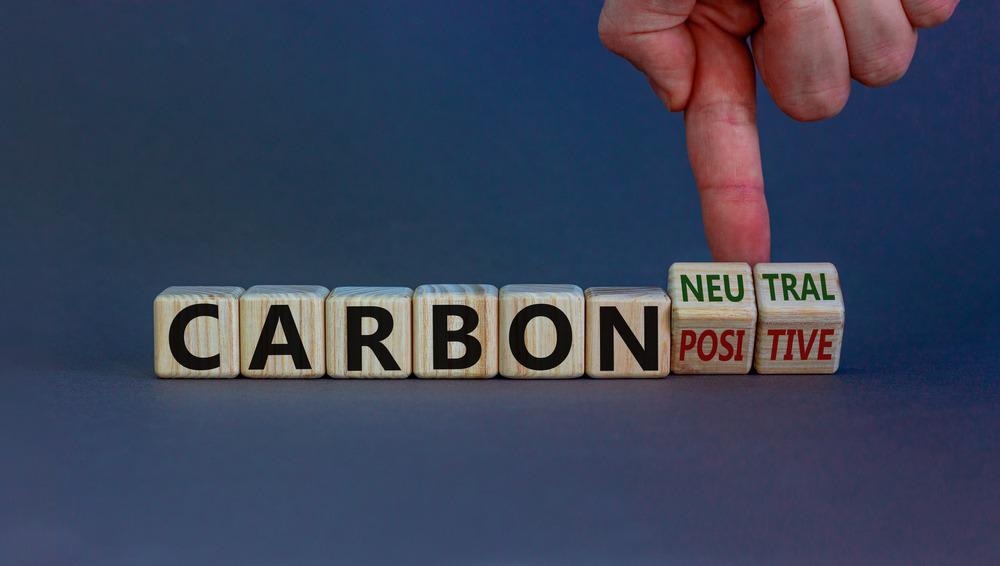In a paper published in the journal Nano Energy, a unique fabrication method could neutralize carbon dioxide emissions from hydrogen generation processes based on natural gases by directly depositing 2D carbon as a cement nanoadditive.

Study: Direct 2D cement-nanoadditive deposition enabling carbon-neutral hydrogen from natural gas. Image Credit: Dmitry Demidovich/Shutterstock.com
The Struggle for Production of Carbon-Neutral Hydrogen for Green Energy
Hydrogen (H2) has surfaced as a clean energy source to take the place of traditional fossil fuels, but cost-effective carbon-neutral hydrogen generation is necessary for worldwide decarbonization. Electrolyzing water and converting natural gas (NG) to hydrogen are well-established methods for generating hydrogen on a mass scale.
Methane-hydrogen conversion may generate hydrogen at a lower expense than carbon-free hydrolysis, which demands a lot of energy, culminating in high costs and poor efficiency. Presently, 95 percent of the hydrogen is generated by the steam methane reformation (SMR) process, resulting in large volumes of carbon dioxide (CO2).
Challenges in Reducing the Carbon Footprint of NG-Hydrogen Conversion
Carbon capture and storage (CCS) methods are used in the latest methods to minimize CO2 emissions from natural gas –hydrogen transformation. Nevertheless, it is presently impractical to use carbon capture and storage to catch all CO2 emissions from the hydrogen generation stage to reach decarbonization.
Collecting liquid CO2 from steam methane reformation with carbon capture and storage needs chemicals and a lot of energy, which raises the price and carbon emissions of H2 products.
Steam methane reformation may also be substituted by methane breaking to collect and store solid carbon throughout reactions. Nevertheless, handling this coated carbon (D-carbon), which might weigh 360 million tons given current H2 consumption, as trash or recyclable manufacture also demands the use of solvents and energy, resulting in elevated carbon emissions and limited financial feasibility.
To allow carbon-neutral natural gas–hydrogen transformation, carbon-negative methods must be introduced.
Generating Negative Carbon Footprint through Methane Cracking
It was hypothesized that a revolutionary methane cracking approach for directly depositing carbon in a two-dimensional (2D) configuration as an addition to cement production might produce a considerable negative carbon output. The entire need for carbon products, including recyclable D-carbon, is 15–20 million tonnes per year, which is far below the size required to sustain methane cracking production worldwide.
After water, the most utilized component is cementitious material, including mortars and cement. As a result, the cementitious material is an excellent outlet for increasing D-carbon requirements.
Two-dimensional carbon nanosheets (CNS), like graphene oxide (GO), have been shown to be among the most efficient cement modifiers, reducing cement use and corresponding CO2 emissions. Nevertheless, the high price of carbon nanosheets and the clustering phenomena prevent them from being used on a broad basis.
Main Challenges
If inexpensive D-carbon performs identically to carbon nanosheets, it may be utilized to minimize cement consumption, resulting in negative carbon emissions. To make such a procedure economically feasible for the cement sector, three big impediments must be solved simultaneously.
To begin, the two-dimensional carbon nanosheets should be immediately placed into the appropriate shape, which may improve cement. Secondly, the two-dimensional carbon nanosheets must self-disperse in concrete with no difficulties of compliance. To achieve an economical cost, no chemical synthesis should be necessary.
Highlights of the Study
In this study, unique multipurpose cement-compatible supports were employed that not only allow direct coating of two-dimensional carbon nanomaterials in the methane cracking procedure but also serve as a transporter of the two-dimensional carbon for efficient dispersion in an augmentation of the cementitious adhesive.
The investigations showed that the two-dimensional D-carbon might greatly increase the stiffness of concrete mixture adhesive by up to 36% without any additional chemical synthesis. The possibility, probable emission reductions, and financial advantages of connecting the H2 and cement distribution networks were also evaluated.
Important Findings
The first effective methane–hydrogen transformation was described using two-dimensional carbon (2D) nanoparticles as a cement nanoadditive to offset the carbon emissions from existing natural gas-based hydrogen generation.
It was demonstrated that this unique manufacturing scheme allowed the conventional natural gas (NG)–hydrogen transformation and cement production lines to be bridged, resulting in a 99 percent cost savings for two-dimensional carbon nano additives and carbon-negative of 234 tons for each ton of hydrogen generated.
If existing natural gas–hydrogen transformation is paired with other CO2 capture approaches, such as carbon capture and storage, a 5% substitution with the suggested technology may offer carbon-free hydrogen production of up to 492.5 million tons yearly, enough to fulfill the projected hydrogen need in 2045.
The findings of this study suggested a significant possibility for direct coating of two-dimensional carbon cement-nanoadditive to create carbon-free energies for a stable future.
Reference
Chen, S. J., Zhang, Q. et al. (2022). Direct 2D cement-nanoadditive deposition enabling carbon-neutral hydrogen from natural gas. Nano Energy. Available at: https://www.sciencedirect.com/science/article/pii/S2211285522004931?via%3Dihub
Disclaimer: The views expressed here are those of the author expressed in their private capacity and do not necessarily represent the views of AZoM.com Limited T/A AZoNetwork the owner and operator of this website. This disclaimer forms part of the Terms and conditions of use of this website.